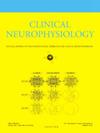研究电化学皮肤电导的昼夜节律模式:使用家用设备进行为期一年的回顾性分析
IF 3.6
3区 医学
Q1 CLINICAL NEUROLOGY
引用次数: 0
摘要
目的:本研究对使用Withings Body Scan和Body Comp秤收集的190多万次皮肤电导(ESC)值进行了综合分析。它旨在建立ESC的描述性值,同时校正年龄、性别、昼夜节律和季节变化对sudomotor功能的影响。方法采用非线性多变量模型和机器学习方法优化与ESC相关的最佳协变量参数集。结果我们的研究结果表明,ESC值随着年龄的增长而逐渐下降,女性的ESC值可能略低于男性。值得注意的是,我们在ESC值中发现了显著的日和年模式,这表明了时间生物学因素的影响。该研究强调了在临床和家庭监测ESC时考虑这些变化的重要性,为周围神经元衰老和ESC作为交感神经系统生物标志物的潜力提供了新的见解。我们的工作为解释ESC测量值提供了重要参考,考虑了人口统计学、生物学和季节变化,并强调了进一步研究以探索这些发现的临床意义的必要性。本文章由计算机程序翻译,如有差异,请以英文原文为准。
Investigating circadian patterns in electrochemical skin Conductance: A year-long retrospective analysis using home-based devices
Objective
This study presents a comprehensive analysis of electrochemical skin conductance (ESC) values collected from over 1.9 million measurements using Withings Body Scan and Body Comp scales. It aimed at establishing descriptive values for ESC while correcting for the influence of age, sex, and circadian and seasonal variations on sudomotor function.
Methods
We used nonlinear multivariate models and machine learning approaches to optimize the best set of covariate parameters associated with the ESC.
Results
Our findings reveal that ESC values exhibit a small, gradual decline with age and are potentially slightly lower in women compared to men. Notably, we identified significant daily and annual patterns in ESC values, suggesting the influence of chronobiological factors.
Conclusions
The study underscores the importance of considering these variations in clinical and home monitoring of ESC, offering new insights into peripheral neuronal aging and the potential for ESC as a biomarker of the sympathetic nervous system.
Significance
Our work establishes a crucial reference for interpreting ESC measurements, taking into account demographic, biological, and seasonal variations, and highlights the need for further research to explore the clinical implications of these findings.
求助全文
通过发布文献求助,成功后即可免费获取论文全文。
去求助
来源期刊

Clinical Neurophysiology
医学-临床神经学
CiteScore
8.70
自引率
6.40%
发文量
932
审稿时长
59 days
期刊介绍:
As of January 1999, The journal Electroencephalography and Clinical Neurophysiology, and its two sections Electromyography and Motor Control and Evoked Potentials have amalgamated to become this journal - Clinical Neurophysiology.
Clinical Neurophysiology is the official journal of the International Federation of Clinical Neurophysiology, the Brazilian Society of Clinical Neurophysiology, the Czech Society of Clinical Neurophysiology, the Italian Clinical Neurophysiology Society and the International Society of Intraoperative Neurophysiology.The journal is dedicated to fostering research and disseminating information on all aspects of both normal and abnormal functioning of the nervous system. The key aim of the publication is to disseminate scholarly reports on the pathophysiology underlying diseases of the central and peripheral nervous system of human patients. Clinical trials that use neurophysiological measures to document change are encouraged, as are manuscripts reporting data on integrated neuroimaging of central nervous function including, but not limited to, functional MRI, MEG, EEG, PET and other neuroimaging modalities.
 求助内容:
求助内容: 应助结果提醒方式:
应助结果提醒方式:


